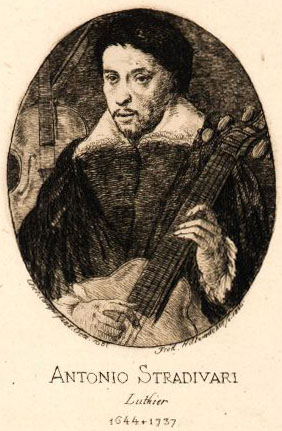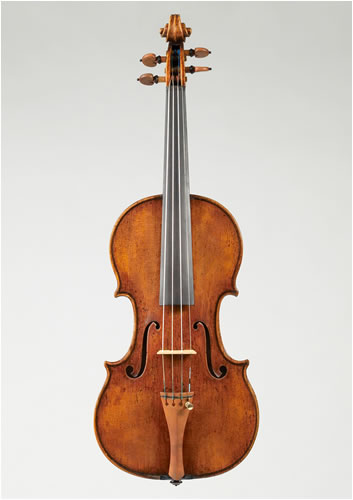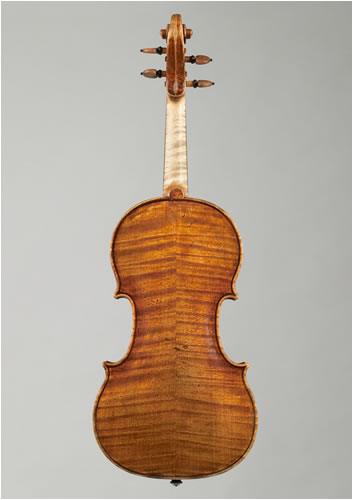
 Antonio Stradivari was born to Alessandro and Anna Stradivari in, or in the vicinity of Cremona about 1644 but no official record of the year or place of birth has been found. In fact his birth year has been approximated from violin labels written in later life that indicate he was 93 years old at the time of death in 1737. During the 1630’s, devastating famine, plague and interstate wars drove many families from the cities to the relative safety of the countryside where indeed his parents may have also sought sanctuary. Plague and famine reputedly killed half the population of Northern Italy including almost all known violin makers, leaving only one to carry the torch of the Italian violin making tradition, Nicolo Amati.
Antonio Stradivari was born to Alessandro and Anna Stradivari in, or in the vicinity of Cremona about 1644 but no official record of the year or place of birth has been found. In fact his birth year has been approximated from violin labels written in later life that indicate he was 93 years old at the time of death in 1737. During the 1630’s, devastating famine, plague and interstate wars drove many families from the cities to the relative safety of the countryside where indeed his parents may have also sought sanctuary. Plague and famine reputedly killed half the population of Northern Italy including almost all known violin makers, leaving only one to carry the torch of the Italian violin making tradition, Nicolo Amati.
It is generally accepted that Antonio Stradivari was a pupil of Nicolo Amati of Cremona (1596-1684) and even upon fleeting inspection of instruments from each maker there is little doubt as to the origin of Stradivari’s artist inheritance. However, with the exception of one violin from the year 1666 bearing a label worded: ‘Alumnus Nicolais Amati’, no historic evidence exists to support this assumption. It has been suggested that during his early career he worked to some extent with the woodcarver Francesco Pescaroli (the ground-floor resident of his house in Corso Garibaldi), which might partly explain why his name does not appear in Parish records registering him to the Amati household, as is the case with the names of known Amati apprentises.
Instruments from Stradivari's early years are few in number but after 1680, having moved his family to a house on Piazza San Domenico his work becomes both consistent and prolific. In the 1690's we see a craftsman who has reached the plenitude of his powers and stepping aside from the Amatese influence, he develops his own violin design ‘The Long Pattern’. Stradivari stayed with this model for the best part of the 1690’s decade constructing at least 50 examples so we can assume it was met with considerable approval by musicians of the day.
After the death of his first wife Francesca Ferraboschi in 1698, Stradivari’s work enters a transitional stage stylistically and, perhaps in part due to the tragic events of 1698, a greater involvement by his two sons Francesco and Omobono is evident. Alterations are made to the arching, cut of the scroll, thickness of wood and the patterns of the violins return to an outline emulating the later works of Nicolo Amati. By 1704 the Stradivari workshop had developed a model (so well exemplified by the ‘Betts’ of that year), that would remain essentially unchanged and one that no maker has since bettered.
Now, at the ripe old age of 60 years, Stradivari enters a highly productive epoch and with an increasingly voluminous output - some years recording over twenty instruments, it is realistic to assume that Francesco and Omobono themselves highly skilled craftsmen, contributed significantly to what is now referred to as the ‘Golden Period’. Instruments created in this era that endured over 20 years are the most highly sought-after violins. Stradivari himself now enjoyed wealth and international recognition and in his day a popular expression, allegedly repeated by fellow Cremonese, rang: ‘Ricchi come Stradivari’.
Antonio Stradivari died on 18th December 1737, leaving a legacy of the most beautiful and tonally beguiling stringed instruments ever made. During a long and illustrious career over one thousand stringed instruments were manufactured in the Stradivari workshop of which some 600 hundred survive today.

